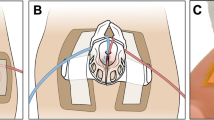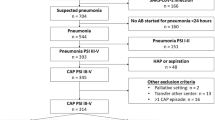Abstract
OBJECTIVE:
The objective of this study was to evaluate the effect of birth center (inborn versus outborn) on morbidity and mortality for preterm neonates (23 to 32 weeks) using data collected prospectively within a uniform protocol.
STUDY DESIGN:
Secondary analyses of data from the NEurologic Outcomes & Pre-emptive Analgesia In Neonates (NEOPAIN) trial (n=898) were performed to evaluate the effect of inborn versus outborn delivery on neonatal outcomes, including the occurrence of severe intraventricular hemorrhage (IVH), periventricular leukomalacia (PVL), chronic lung disease (CLD), and mortality.
RESULTS:
Outborn babies were more likely to have severe IVH (p=0.0005); this increased risk persisted after controlling for severity of illness. When adjustments for antenatal steroids were added, the effect of birth center was no longer significant. Neither the occurrences of PVL or CLD nor mortality were significantly different between the inborn and outborn infants.
CONCLUSION:
Outborn babies are more likely to have severe IVH than inborn babies, perhaps because their mothers are less likely to receive antenatal steroids. Improvements in antenatal steroid administration to high-risk women may substantially reduce neonatal morbidity.
This is a preview of subscription content, access via your institution
Access options
Subscribe to this journal
Receive 12 print issues and online access
$259.00 per year
only $21.58 per issue
Buy this article
- Purchase on Springer Link
- Instant access to full article PDF
Prices may be subject to local taxes which are calculated during checkout
Similar content being viewed by others
References
Yeast JD, Poskin M, Stockbauer JW, et al. Changing patterns in regionalization of perinatal care and the impact on neonatal mortality. Am J Obstet Gynecol 1998;178:131–135.
Synnes AR, Chien LY, Peliowski A, et al. Variations in intraventricular hemorrhage incidence rates among Canadian neonatal intensive care units. J Pediatr 2001;138:525–531.
Horbar JD, Badger GJ, Lewit EM, et al. Hospital and patient characteristics associated with variation in 28-day mortality rates for very low birth weight infants. Vermont Oxford Network. Pediatrics 1997;99:149–156.
Sankaran K, Chien LY, Walker R, et al. Variations in mortality rates among Canadian neonatal intensive care units. Can Med Assoc J 2002;166:173–178.
Kitchen W, Ford G, Orgill A, et al. Outcome of extremely low birth-weight infants in relation to the hospital of birth. Aust N Z J Obstet Gynaecol 1984;24:1–5.
Towers CV, Bonebrake R, Padilla G, et al. The effect of transport on the rate of severe intraventricular hemorrhage in very low birth weight infants. Obstet Gynecol 2000;95:291–295.
Chien LY, Whyte R, Aziz K, et al. Improved outcome of preterm infants when delivered in tertiary care centers. Obstet Gynecol 2001;98:247–252.
Phibbs CS, Bronstein JM, Buxton E, et al. The effects of patient volume and level of care at the hospital of birth on neonatal mortality. JAMA 1996;276:1054–1059.
Kollee LA, Brand R, Schreuder AM, et al. Five-year outcome of preterm and very low birth weight infants: a comparison between maternal and neonatal transport. Obstet Gynecol 1992;80:635–638.
Warner B, Musial MJ, Chenier T, et al. The effect of birth hospital type on the outcome of very low birth weight infants. Pediatrics 2004;113:35–41.
Lee SK, McMillan DD, Ohlsson A, et al. The benefit of preterm birth at tertiary care centers is related to gestational age. Am J Obstet Gynecol 2003;188:617–622.
Anand KJ, Hall RW, Desai N, et al. Effects of morphine analgesia in ventilated preterm neonates: primary outcomes from the NEOPAIN randomised trial. Lancet 2004;363:1673–1682.
Tarnow-Mordi W, Parry G . The CRIB score. Lancet 1993;342:1365.
Papile LA, Burstein J, Burstein R, et al. Incidence and evolution of subependymal and intraventricular hemorrhage: a study of infants with birth weights less than 1,500 gm. J Pediatr 1978;92:529–534.
Ment LR, Bada HS, Barnes P, et al. Practice parameter: neuroimaging of the neonate: report of the Quality Standards Subcommittee of the American Academy of Neurology and the Practice Committee of the Child Neurology Society. Neurology 2002;58:1726–1738.
Perlman JM, Rollins N . Surveillance protocol for the detection of intracranial abnormalities in premature neonates. Arch Pediatr Adolesc Med 2000;154:822–826.
Maalouf EF, Duggan PJ, Counsell SJ, et al. Comparison of findings on cranial ultrasound and magnetic resonance imaging in preterm infants. Pediatrics 2001;107:719–727.
Wright LL, Horbar JD, Gunkel H, et al. Evidence from multicenter networks on the current use and effectiveness of antenatal corticosteroids in low birth weight infants. Am J Obstet Gynecol 1995;173:263–269.
Miller TC, Densberger M, Krogman J . Maternal transport and the perinatal denominator. Am J Obstet Gynecol 1983;147:19–24.
Fanaroff AA MR (ed). Neonatal–Perinatal Medicine, 7th edn, vol 1. St. Louis: Mosby; 2002. p. 31, 309–410.
Chien LY, Ohlsson A, Seshia MM, et al. Variations in antenatal corticosteroid therapy: a persistent problem despite 30 years of evidence. Obstet Gynecol 2002;99:401–408.
Creasy RK RR (ed). Maternal–Fetal Medicine, 4th edn, vol 1. Philadelphia: W.B Saunders Company; 1999. p. 515–521.
Acknowledgements
This study was supported by the National Institute for Child Health and Human Development (HD36484 to K.J.S. Anand, HD36270 to B.A. Barton), from the Chief Scientist's Office of the Scottish Executive (to N. McIntosh), from the Swedish Research Council, Vardal Foundation and Free Masons, Sweden (to H. Lagercrantz and L.L. Bergqvist), from the Fondation pour la Santé CNP, France (to R. Carbajal and R. Lenclen), and from the Örebro University Hospital Research Foundation, Sweden (to J. Schollin and M. Eriksson). We gratefully acknowledge the contributions of all the physicians, nurses, pharmacists, ultrasonographers, occupational and physical therapists at the participating institutions, and the parents who gave consent for this study.
Author information
Authors and Affiliations
Additional information
NEOPAIN=NEurologic Outcomes & Pre-emptive Analgesia In Neonates.
Rights and permissions
About this article
Cite this article
Palmer, K., Kronsberg, S., Barton, B. et al. Effect of Inborn versus Outborn Delivery on Clinical Outcomes in Ventilated Preterm Neonates: Secondary Results from the NEOPAIN Trial. J Perinatol 25, 270–275 (2005). https://doi.org/10.1038/sj.jp.7211239
Published:
Issue Date:
DOI: https://doi.org/10.1038/sj.jp.7211239
This article is cited by
-
Long-term outcomes of children with neonatal transfer: the Japan Environment and Children’s Study
European Journal of Pediatrics (2022)
-
Quantifying the variation in neonatal transport referral patterns using network analysis
Journal of Perinatology (2021)
-
Causes of death in very preterm infants cared for in neonatal intensive care units: a population-based retrospective cohort study
BMC Pediatrics (2017)
-
Network analysis: a novel method for mapping neonatal acute transport patterns in California
Journal of Perinatology (2017)
-
Telemedicine collaboration improves perinatal regionalization and lowers statewide infant mortality
Journal of Perinatology (2013)



